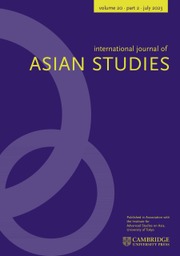The historical scholarship on women Sufis and mystics remains scarce, largely due to the limited surviving material about them compared to their male counterparts. The historical traces of women Sufis, whether in textual or architectural forms, are far fewer. In this context, Minlib Dallh’s book makes a significant and much-needed contribution. Dallh has worked with a few available sources, ranging from different time periods to talk about the lives and spiritual legacies of women Sufis. His approach is noteworthy as he selects figures from various Islamic dynasties, representing diverse social statuses and spiritual paths. Importantly, the author explores the varied social and economic contexts of these women and shows how each of them used the resources at her disposal to leave behind a legacy rooted in Islamic practice and moral integrity. At the same time, Dallh also acknowledges the challenge posed by the limited medieval textual sources available to construct the biographies of early women Sufis.
A key argument of the book is that these women Sufis should be recognized in their ‘own right’ for their contributions to Islamic mystical traditions (p. 2). Dallh also offers a thoughtful reflection on how women mystics perceived and expressed their spirituality and divine love in ways that were often different from what we might expect today. He cautions against imposing modern secular or liberal interpretations on historical concepts of gendered authority within Islamic mysticism. Instead, he presents the ‘epistemic authority of women’ within predominantly Muslim societies as complex and ‘nuanced’, deserving careful attention (p. 10).
The book is structured in five chapters, along with an introduction, conclusion, and index. The language of the text is lucid and easy to follow, though there are some typos and grammatical errors. One of the strengths of the work is its clarity of focus: Dallh is upfront about the scope of the monograph, explaining that its limited length does not allow for a more comprehensive history of the six women mystics he examines. The first chapter of the book introduces two 9th-century Sufi women from Greater Khurasan: Fatima of Nishapur and Umm Ali al-Balkhi. The author begins by setting the scene with an overview of Khurasan’s geography and political dynamics, followed by an exploration of early ascetic movements in the region. He then focuses on the lives of Fatima and Umm Ali, depicting them as pious, educated, and spiritually influential figures of their time. He says that both women practiced a ‘sober’ form of mysticism that emphasized inner discipline and detachment from worldly life (p. 30).
Chapter two shifts to 13th-century North Africa and examines the life and influence of Aisha al-Mannubiyya, also known as al-Sayyida. Placing her within the context of the Hafsid dynasty, the author explores her spiritual authority and the hagiographical narratives that celebrate her close relationship with God. The author argues that she was recognized as the leading female saint of her era, a figure whose spiritual presence and authority were unparalleled in the Sufi tradition of Ifriqya. The third chapter of the book offers a study of Aisha al-Bauniyya, a mystic and poet of the late Mamluk era in Egypt and Syria. The author discusses how Aisha’s use of love imagery and erotic language in her writings echoes the spiritual expressions of the 13th-century Beguine mystics of Western Europe. Among her many works, the chapter focuses on Emanations of Grace and the final section of Principles of Sufism, both of which delve into the longing of the soul for the divine beloved.
The fourth chapter turns to the Mughal princess Jahan Ara Begum (1614–1681), exploring how her spiritual and political life intersected. The discussion centers on her two Sufi treatises, Risala-i-Sahibiyah and Munis al-arvah, while also examining her visible contributions to public life. Through the construction of mosques, gardens, and other sacred projects, as well as charitable acts and patronage of Sufi institutions, Jahan Ara carved a prominent role for herself in the empire’s religious and social landscape. The fifth chapter of the book focuses on the life and work of Nana Asma’u bint Usman dan Fodio (d. 1865), a prominent figure in the history of West African Islam. The author examines the rise of Sufism and Islamic revival in the region, particularly through the establishment of the Sokoto Caliphate (1804–1904). Central to this discussion is Asma’u’s role as both a scholar and spiritual leader, as well as her pioneering approach to women’s education through the Yan Taru network, which created a system of female associates dedicated to learning and teaching.
One of the strengths of Dallh’s work lies in its careful engagement with existing scholarship. The book draws from an impressive range of studies and theoretical perspectives, and the author acknowledges these sources with proper credit. However, this reliance on secondary scholarship is also one of the book’s limitations. At times, the author’s own arguments and voice seem overshadowed by the theories and interpretations of others. While the synthesis of existing work is thorough, there are moments where the book could have offered a more distinctive or critical perspective rather than leaning heavily on established ideas. Despite this, the author succeeds in creating a resource that invites readers to reflect not only on the spiritual contributions of these women but also on the broader patterns of exclusion that have shaped historical narratives.
Overall, the book is an important step toward bringing attention to female mystics who have historically been left out of mainstream narratives, opening important conversations about how history remembers these figures and why it is necessary to reclaim their stories. It is likely to interest a wide range of readers, including those drawn to Sufism, religious history, and Muslim women’s spirituality. Its accessible style and focus on both history and spirituality make it an appealing read for scholars, students, and general readers alike. It serves both as a foundational study for those new to the topic and as a starting point for further research.


